News
Madampitiya garbage dump swelling to dangerous proportions
View(s):By Ishu Bandara
The Madampitiya dump site, with waste piling up to about 15 metres in height, poses a serious threat to nearby residents, a municipal official has warned.
Shahina Mysan, director of engineering (solid waste management) at the Colombo Municipal Council (CMC) said: “The dump site spans two to three acres, with garbage piled up to about 15 meters in height now. Based on our assessment, it poses a potential threat to residents in the surrounding area, especially during the rainy season.”
Operated by the CMC, this is a waste disposal site in Colombo 15, about 4 km from the city centre and is surrounded by schools and restaurants and shops. This site is the only non-degradable waste dump site in Colombo following the closure of Meethotamulla and Bloemendhal.
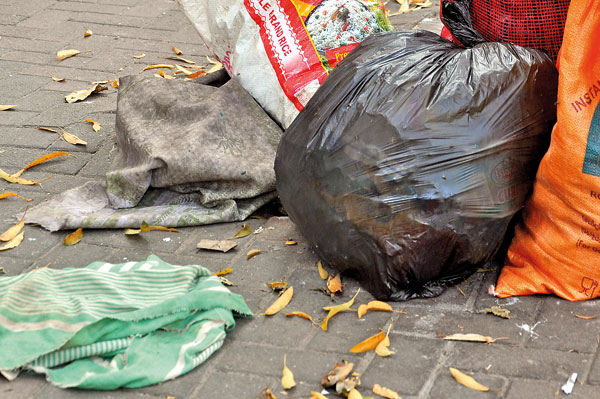
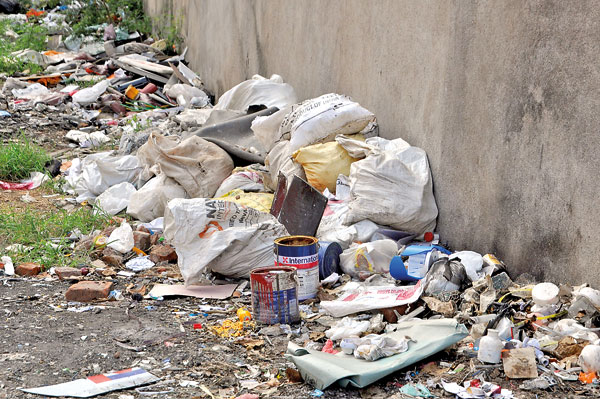
A not very clean Sri Lanka: People dump garbage by the wayside in the Borella and Punchi Borelle areas
“Under the Clean Sri Lanka programme and with major infrastructure developments such as Port City and high rise buildings, Colombo’s waste generation is expected to increase significantly over the next 40 to 50 years. The CMC must be prepared to manage this growing demand while ensuring environmental sustainability,” Ms Mysan told the Sunday Times.
She urged the Urban Development Authority to allocate land for new initiatives. “Otherwise, the volume of waste reaching the Madampitiya dump site will continue to rise, posing serious concerns.’’
“Remembering the tragic history of the Meethotamulla disaster, we are deeply concerned about the current situation. If an alternative solution is not provided, this could become a major threat to both human lives and the environment,” Ms. Mysan, said.
“We need to establish a sanitary landfill soon, as we currently do not have one. These are urgent issues we must address to prevent disasters like Meethotamulla. I have raised this concern in every meeting I have attended, but I am unsure how well the authorities have understood the gravity of the problem.”
However, the Minister of Urban Development, Construction, and Housing, Dr. N.G. Anura Karunathilake, responded to the concerns highlighted by Director Ms. Mysan in the Sunday Times: “We are well aware of the issue raised regarding waste management by the CMC. The government will start operations at the Aruwakkalu site by the end of this year, mainly focusing on non-degradable waste as a solution to the excessive dumping at the Madampitiya site. Testing is expected to begin by the end of March or the first week of April.
“Hopefully, when we start our Aruwakkalu project, most dumps in the Western Province will be managed.’’
The government is managing other waste management facilities, including the one in Kerawalapitiya, he said.
He said that a site in Paraviyana is entangled in a lawsuit, but once the legal issues are resolved, it will become operational for waste disposal, with plans to develop it as a waste-to-energy plant in collaboration with the private sector.
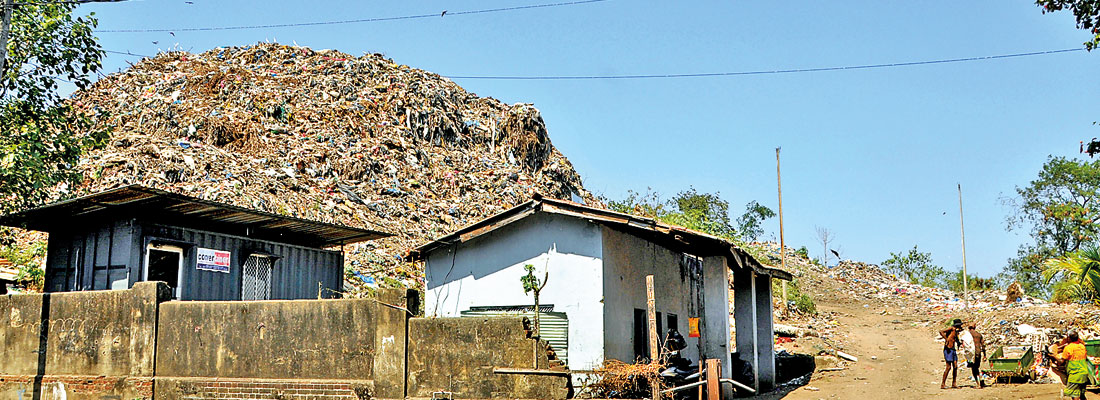
The towering Madampitiya garbage mound Pix by Priyanka Samaraweera
Another privately operated waste-to-energy plant is already contributing to the CMC waste management system, he said.
Dr. Karunathilake said: “Another project is being developed in collaboration with the Korean government, with a basic agreement between the two countries already finalised. Discussions and feasibility studies are ongoing, and the project is expected to start in 2027. It is also planned to be located in Kerawalapitiya.’’
For years Sri Lankans have had limited awareness of garbage disposal or of keeping the environment clean. Usually they tend to focus only on keeping their own homes and immediate surroundings clean, without much thought about how pollution affects the country, even their own health and quality of life.
Some people dispose of garbage in hidden or public spaces. They just dump trash wherever they can, as long as no one notices. To bring about lasting change, this awareness must be instilled from childhood, fostering a new generation that values cleanliness and takes responsibility for the environment.
Speaking about public awareness of garbage disposal in Sri Lanka, Minister Dr. Karunathilake and CMC’s Ms. Mysan, told the Sunday Times that the media has a crucial role in educating people about their responsibility to protect the environment and keep the country clean, as public awareness is low. She suggested that the media use cartoons or videos to convey this message.
They urged the public to take waste management seriously to prevent disasters like Meethotamulla and expressed their concerns about the lack of public awareness regarding proper waste separation. They emphasised that failing to sort garbage creates challenges for recycling.
Both officials emphasised that despite sufficient legal provisions, people’s attitudes have not changed. They also stressed the need for the Environmental Police to be more proactive.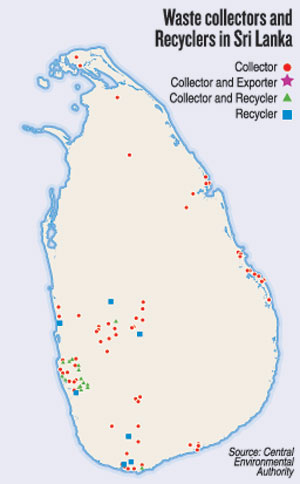
However, the most crucial step is changing people’s mindset. Dr.Karunathilake said that under the ‘Clean Sri Lanka’ programme, the government hopes to gradually encourage Sri Lankans to adopt better waste management habits.
Ms Mysan said that the Environmental Police are not actively addressing illegal dumping. However, she noted that the CMC collaborates with the police by providing CCTV footage to support legal action against offenders, she told the Sunday Times.
When the Sunday Times asked the public and officials involved in garbage collection, they pointed to the ineffectiveness of the Environmental Police Unit.
“Some years ago, the Environmental Police Unit in Colombo was very active. They used to distribute leaflets to raise public awareness, do frequent mobile inspections throughout the day, and take legal action against those who dumped garbage illegally. Back then, our workload was more manageable, and we could complete our tasks on time. But now, we waste a lot of time collecting illegally dumped garbage from roadsides, and since the waste is often mixed, we have to spend extra time separating it,” claimed an anonymous source.
Sri Lanka has implemented several laws to control environmental pollution, including the National Environmental Act No. 47 of 1980, the National Environmental (Protection & Quality) Regulations No. 1 of 2008, the Standard By-laws on Solid Waste Management, the National Policy on Waste Management (2019), and the Regulations on Polythene and Plastic Management (2017).
However, the Environmental Police Unit denied these claims.
“We are carrying out our duties just as we did before. We deploy police to investigate these issues daily and follow proper procedures to address illegal garbage dumping. Legal action is being taken against those violating environmental regulations. Additionally, we have a ‘community police’ committee in every village, which plays a significant role in addressing waste management issues. Every police department has a dedicated unit for this, and we have daily operations.”
The Sunday Times observed that public garbage disposal in many areas of Colombo remains poor. Many resort to open dumping, burning waste, and do not separate recyclables.
Pilgrims’ waste stains the natural beauty of sacred peak 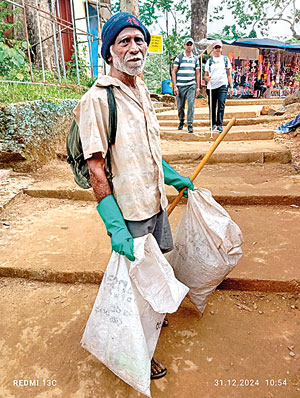 Cleaners are faced with arduous task On December 31, Jana Zelinkova, a long-time resident of Sri Lanka from the Czech Republic, shared her excitement about climbing Sri Pada with the Sunday Times. She was amazed at how clean the trail was and posted about it on Facebook, telling the world that Sri Lankans seemed to be shifting their attitude towards cleanliness. But just a few weeks later, her joy turned into heartbreak. When she revisited the sacred mountain in mid January, the path was now littered with garbage — plastic wrappers, bottles, and other waste dumped along the roads and in the forest. She described her initial experience of climbing Sri Pada in detail and recalled her train ride and the Hatton Railway station. She said it was the cleanest station, well maintained with a neat garden. She also explained her experience of travelling by bus and finally how she made it to the breathtaking Adam’s Peak. She said one thing that puzzled her was the plastic toys for sale on her way to Adam’s Peak. However, Ms Jana said she admired Sri Lanka and its people and believes things are changing, that locals were finally starting to care about keeping their environment clean. She even proudly shared her experience with the world. But by mid-January, her excitement turned into deep disappointment. The same Sri Pada trail that had impressed her in December was now covered in garbage. Pilgrims had dumped waste. Heartbroken, she posted the ugly sight. Ms Jana still holds onto hope that Sri Lankans will truly change their attitude towards the environment not just for show, but for real. “Without loving nature, you can’t expect it to give anything back. To achieve the dream of a clean and sustainable Sri Lanka, people must genuinely care for and protect the beauty of their own country,” she told the Sunday Times. 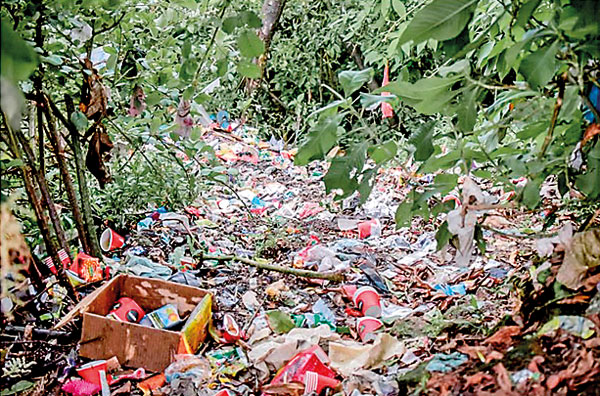 The pilgrims' progress, or lack thereof | |
The best way to say that you found the home of your dreams is by finding it on Hitad.lk. We have listings for apartments for sale or rent in Sri Lanka, no matter what locale you're looking for! Whether you live in Colombo, Galle, Kandy, Matara, Jaffna and more - we've got them all!

